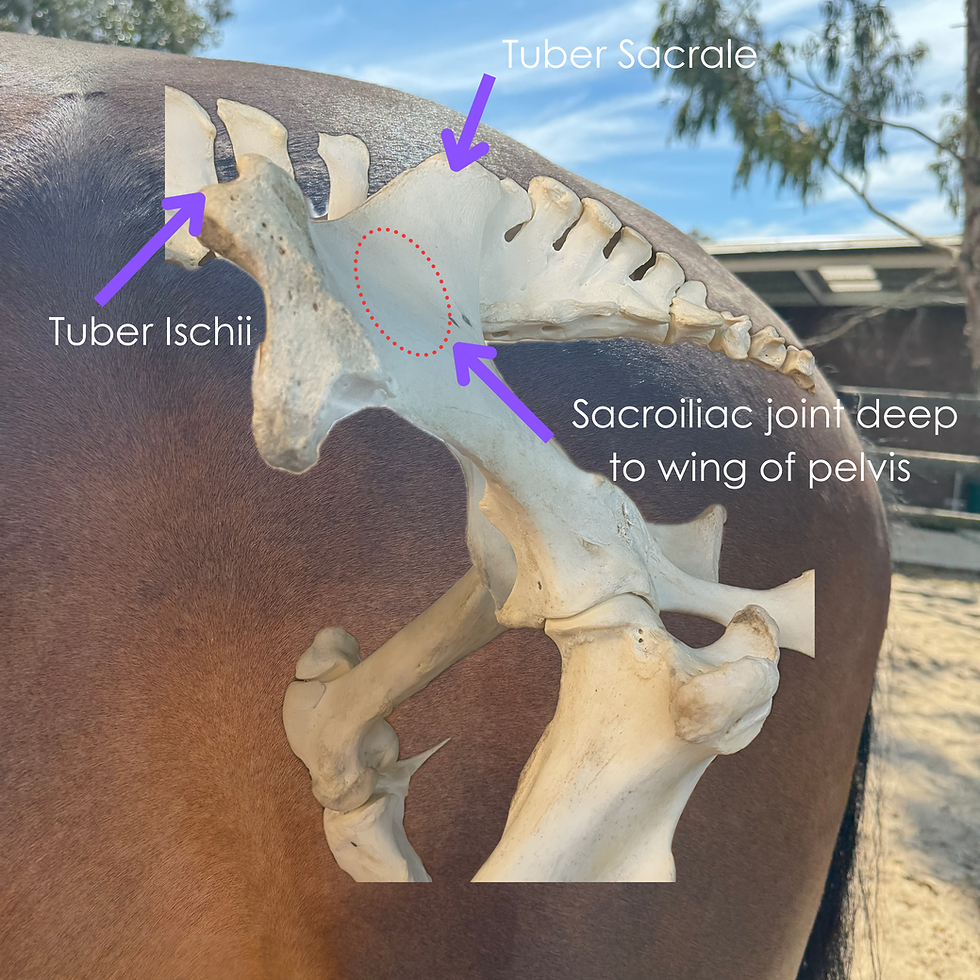Anatomy of the Neck
- Anushka von Oppen

- Apr 27
- 2 min read
Bones
The horse’s neck consists of seven cervical vertebrae, each with distinct anatomical features and functional roles:
- Atlas (C1): Connects directly to the skull at the occiput, facilitating vertical (up and down) head movements and lateral rotation.
- Axis (C2): Provides rotational movement, working closely with the atlas.
- C3–C7: Known as typical cervical vertebrae, although notable variations can occur at C6 and C7, involving skeletal malformations affecting muscle attachments.
- C7: Joins the first thoracic vertebra, marking the cervicothoracic junction.
Gliding Joint Function: Proper function of cervical facet joints depends on their gliding movements, which are critical for lateral bending and rotation. Dysfunction or degeneration of these joints due to improper riding or repetitive stress may significantly impair neck flexibility and lead to pain and potential nerve root impingement.

Ligaments
The nuchal ligament plays a critical biomechanical role in the horse’s cervical region. Extending along the neck from the back of the skull to the withers, the ligament provides passive support and elasticity to the movement of the head and neck. It comprises two parts:
- Funicular part: A cord-like structure running from the poll to the withers, continuing along the top of the back as the supraspinous ligament.
- Lamellar part: A flat, fan-shaped structure attaching to the cervical vertebrae (typically C2 to C5, with variability in attachment to C6 and C7).
The nuchal ligament is key in stabilising the cervical vertebrae and distributing mechanical forces during locomotion. Its continuation into the supraspinous ligament facilitates continuous load transfer along the spine. The interconnection of these ligaments and associated fascial layers has significant implications within tensegrity models (myofascial lines), affecting overall biomechanical stability and movement.
Muscles

Several key muscles contribute to neck function, posture, and stability:
- Longus colli muscle: Critical for stabilising the cervicothoracic junction. Richly innervated, it enables precise head and neck movements and supports postural control.
- Brachiocephalicus: Involved in advancing the forelimb and flexing the neck laterally; frequently subject to tension, especially in horses ridden with tight contact.
- Splenius and Semispinalis capitis: Contribute to head and neck extension; often become overworked in horses with hyperflexed postures.
- Sternocephalicus: Assists in neck flexion and lateral movement.
- Omotransversarius: Facilitates lateral flexion of the neck and assists in forelimb protraction.
- Cervical serratus ventralis: Important in suspending the trunk between the scapulae and supporting the thoracic sling.
- Subclavius: Contributes to forelimb retraction and influences the base of the neck.
Together, these muscles coordinate dynamic stabilisation of the neck and shoulders. Their interplay is critical in both locomotion and postural balance, and dysfunction in one group can have cascading effects throughout the cervicothoracic region.

Nerve Roots
Nerve roots emerge between cervical vertebrae, providing sensory and motor innervation to the neck and forelimbs. These nerve roots can become impinged or compressed due to inflammation, arthritis, or degenerative changes in facet joints, potentially causing pain, neurological symptoms, and compromised performance.
To learn more about functional problems of the neck have a look at our associated blog post: Neck Pain and Dysfunction in Horses.













Comments